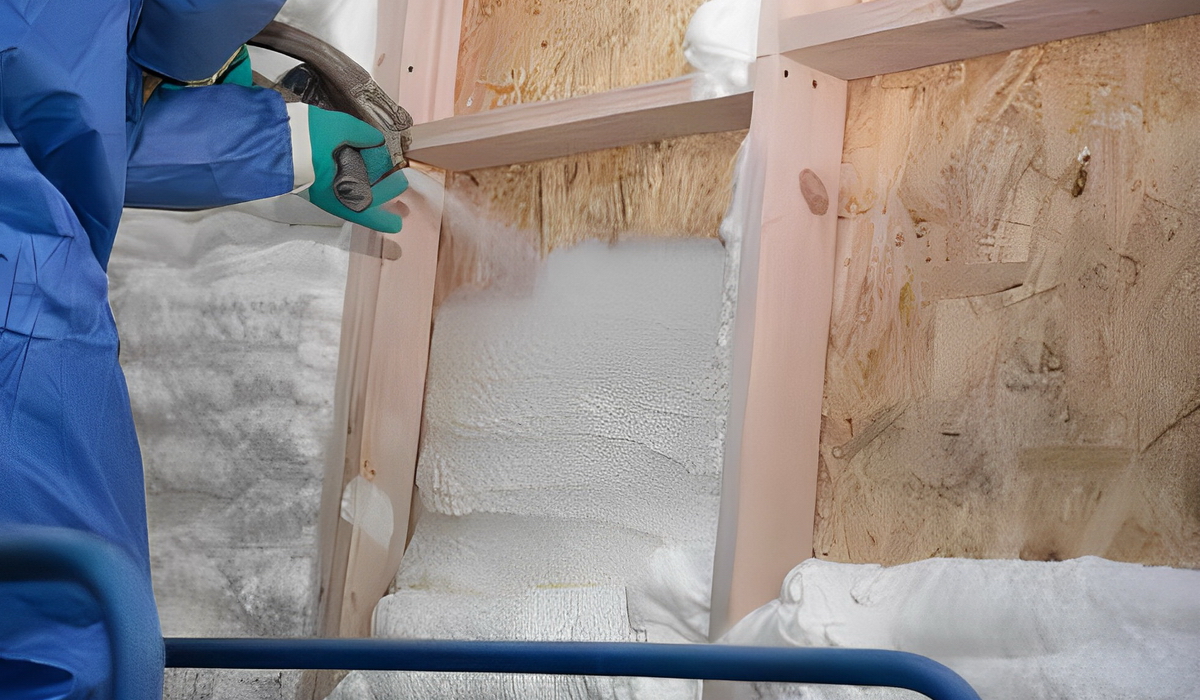
As a home or business owner, it’s our goal to ensure that our roof is able to protect us from the elements and maintain a comfortable living or working environment. Without a durable and reliable roof, the structure of our property can quickly deteriorate and result in costly repairs. One option for a sturdy roof is spray foam roofing. This method involves spraying a combination of polyurethane and isocyanate onto your existing roof substrate to form a solid, seamless layer of protection.
However, it’s more than just that. The foam insulation also helps to regulate the temperature inside your property and can lead to energy savings
So, how do you know if spray foam roofing is the right choice for you? This article covers all there is to know about spray foam roofing, including the benefits, cost, and installation process.
What Exactly Is Spray Foam Roofing?
In the US alone, heat loss and gain through the roof account for 25-40% of a building’s energy usage. While traditional roofing materials offer some level of insulation, they often leave gaps and cracks where outdoor air can seep in.
When such things happen, the HVAC system has to work harder to maintain the desired temperature, resulting in higher energy bills.
Spray foam roofing offers a solution by creating a seamless, solid layer of insulation on your roof. Spray polyurethane foam (SPF) is applied as a liquid and expands to fill in any cracks or gaps, creating a waterproof barrier. It also reflects the sun’s rays, helping to keep your building cool in the summer and warm in the winter.
What Makes Up Spray Foam Roofing System?
Two kinds of substances, isocyanate and polyol resin, are what make up SPF. When mixed together, they react and expand to about 100 times their original volume in just seconds. This quick expansion allows for a seamless application on the roof surface.
Not only does spray foam roofing provide superior insulation, but it can also add structural stability to your roof and potentially extend its lifespan. In fact, a properly installed SPF roof can last 50 years or more with minimal maintenance.
Understanding the Basics of Spray Foam Roofing
In spray foam roofing, the two SPF components (A&B) are combined and applied on the roof substrate using a specialized spray foam rig.
The two substances are kept in separate containers and are injected through high-pressure hoses into a melding gun at a temperature between 115 and 130 °F.
The proper amount of pressure and heat is crucial in order to achieve the desired expansion and solidification of the foam.
As the foam dries, it solidifies to create a seamless, strong, lightweight membrane that is also waterproof. SPF is suitable for use in almost all climates and offers the highest R-value of any commercial roofing material.
R-value is an indicator of thermal resistance and the higher the R-value, the better a material is at insulating.
UV Performance of an SPF Roofing System
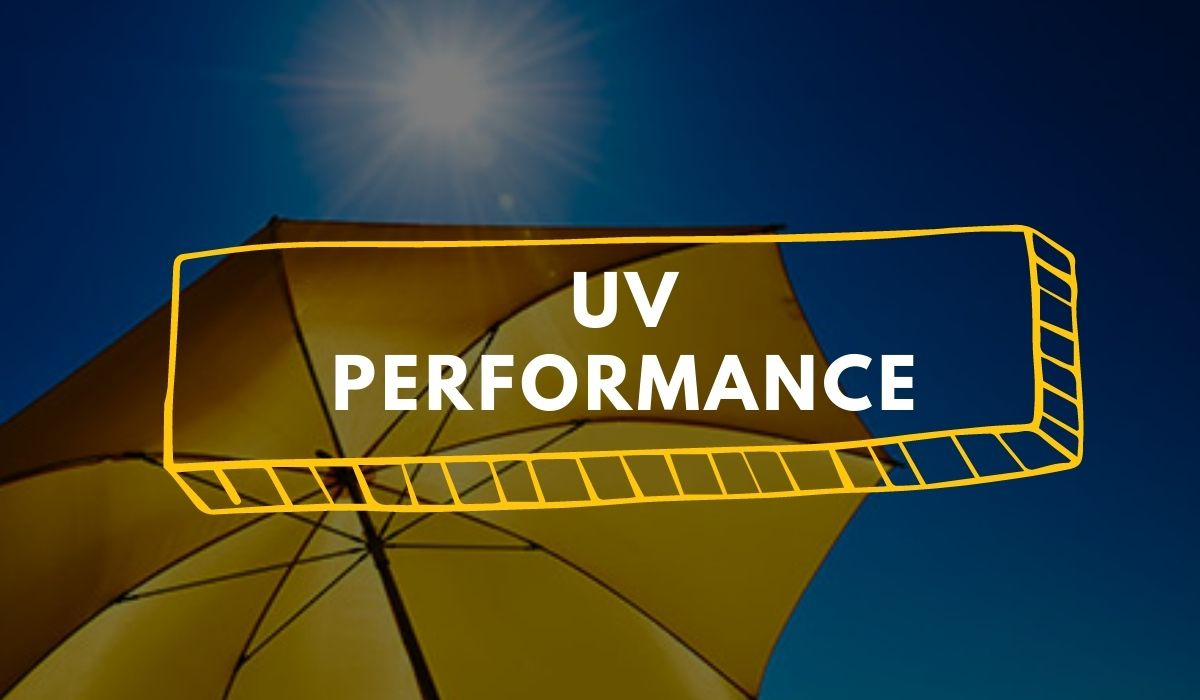
While SPF is a fantastic insulator and waterproofer, it provides little to no protection from the sun’s UV rays. This might come as a surprise since most traditional roofing materials offer some level of UV protection.
To combat this issue, spray foam roofs are often coated with a protective layer, called elastomeric roof coating. Elastomeric silicone is composed of acrylic, silicone butyl rubber, and urethane.
These coatings offer added protection from the sun’s rays and can also improve the appearance and longevity of your roof. It’s important to note that elastomeric coatings must be reapplied every few years in order to maintain their effectiveness.
We advise an elastomeric silicone coating with a minimum thickness of 20 mils based on SPFA recommendations. Depending on the chemical structure being used and the warranty requirements, up to 40 mils might be needed in some circumstances.
By combining the benefits of SPF with an elastomeric coating, you can enjoy a durable and energy-efficient roof for years to come.
Foam Density of SPF Roofing Systems
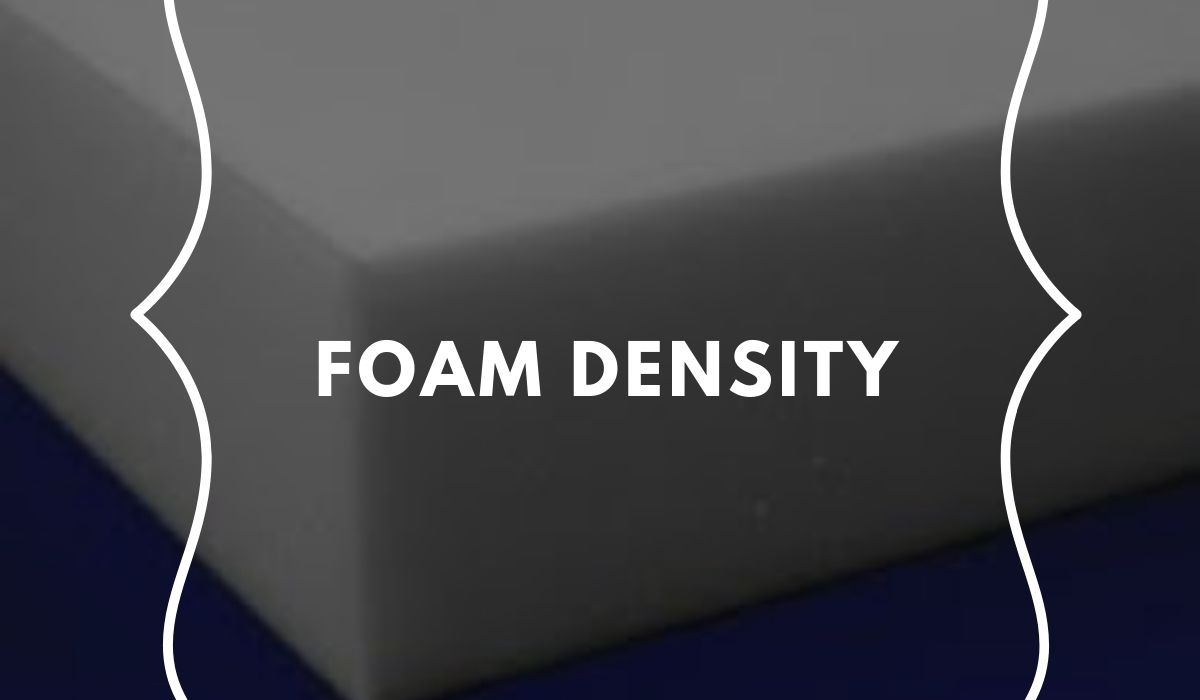
The B component of your SPF roofing system, also known as foam density, can vary depending on the specific needs of your building and climate.
The foam is required to have a density of at least 2.5 psi in order to be powerful enough to be used in a commercial roofing application.
Usually, a density of 2.7–3.0 pounds. is required to make the foam stiff enough to walk on. Anything with a density less than this might not be suitable for use as a roofing material.
A flat roof often requires a heavier foam, with densities ranging from 3.0 to 4.0 pounds per cubic foot to provide enough support for the roof’s weight and potential heavy equipment or paraphernalia such as air conditioning units.
Sloped roofs may not have these added weight considerations, so they can typically use a lower-density foam. The lower density also allows for easier run-off of rainwater, reducing the chance of standing water on the roof.
However, it’s important to consult with a spray foam contractor who can recommend the best foam density for your specific roofing needs. If your existing roof already has some structural integrity, a lower-density foam might be sufficient.
The Top Benefits of Spray Foam Roofing Systems
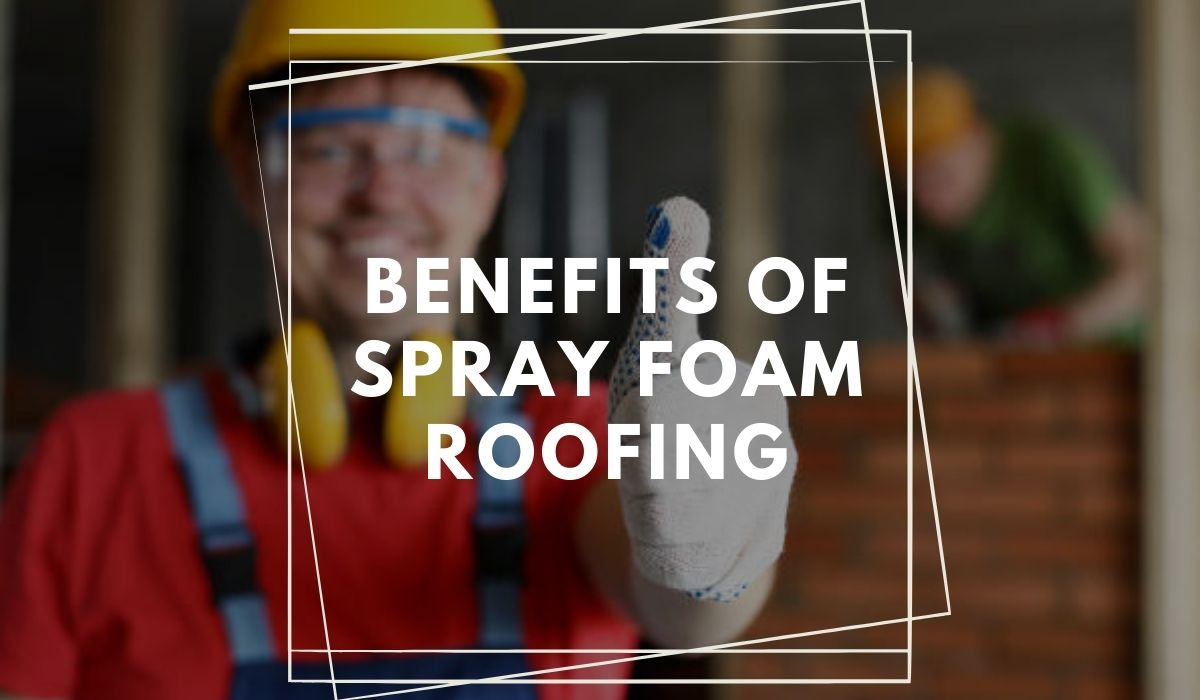
The advantages spray foam roofing provides are what sets it apart from traditional roofing materials. Spray polyurethane foam SPF has slowly become the go-to solution for residential and commercial roofing in recent years, and for good reason.
Below, we have listed the several benefits spray foam roofing systems offer:
Spray Polyurethane Foam Roofing Is Cost Effective
Of course, no one wants to spend more than necessary on a roofing system. But you also don’t want to skimp and sacrifice the quality of your roof.
With the many risks a roof can face – from the sun’s rays and moisture damage to wind, hail, and fire – it’s important to have a durable and reliable roof.
While the upfront cost of spray polyurethane foam roofing might be higher than traditional roofing materials, the long-term cost savings are significant.
Spray foam roofs can last up to 50 years with proper maintenance. You can quickly apply it to your existing roof substrate without the need for extensive and expensive tear-off or replacement.
Plus, SPF systems can last decades with proper maintenance, giving you a chance to save up on long-term roofing costs.
In addition, an SPF roofing system can provide substantial energy savings. The foam’s airtight seal and insulation properties can decrease reliance on heating and cooling systems, reducing energy bills for the long term. If you’re running a business, this will also improve the overall efficiency of your building.
Thermal Resistance (R-Value) is On Point
You might think that traditional insulation materials provide the highest thermal resistance, but spray foam actually exceeds those options.
The Closed Cell foam SPF option has a higher R-value per inch than fiberglass and cellulose insulation, meaning it can better resist heat flow and maintain comfortable indoor temperatures.
This is crucial for not only energy efficiency and cost savings, but also for the comfort and safety of the building’s inhabitants.
Especially in extreme climates, a high R-value can provide much-needed temperature control for buildings and homes. No one would certainly like to experience the discomfort and potential health risks of excessive heat or cold.
Heat stroke, hypothermia, and respiratory issues can all be avoided with a properly insulated home or commercial building. SPF provides this insulation in an easy-to-apply solution that lasts for decades.
Even when compared to the commercial metal roof which may have low initial installation costs, the long-term thermal resistance, and energy efficiency of SPF roofing make it a more cost-effective option
The installation process of the SPF System is Quick
Nothing beats the convenience of a quick installation process.
You no longer have to worry about the time and expense of tearing off an old roof or waiting for shingles or tiles to be individually placed.
The liquid spray foam can quickly cover your existing roof, bonding with the surface to form a seamless seal.
An existing roof substrate can even serve as a base for the foam, allowing for installation without added structural support.
In fact, you can expect most SPF roofing installations to be completed within three days or less. This means minimal disruptions and quick protection for your property’s roof.
However, the time it takes to complete the installation still depends on several factors such as how big the roof area is and any necessary repairs that need to be made beforehand.
Still, the convenience and speed of spray foam roofing system installation can save you time, money, and hassle in the long run.
This is especially useful for business owners who can’t afford to have their operations interrupted for extended periods of time
SPF Roofing System Is Durable and Reliable
No roof is invincible, but SPF offers one of the most durable and reliable options on the market. Its seamless application creates a strong bond with your roof, protecting it from moisture damage and air leaks.
If you live in an area such as the coast where high winds and hurricanes are common, SPF roofing can provide added protection against these extreme weather conditions.
The last thing you want to happen is for your roof to be damaged during a storm, leaving you vulnerable to leaks and other costly repairs.
In addition, SPF offers excellent resistance against fire and chemicals. This added protection can give you peace of mind, especially if your property is located in an area at high risk for fires or exposure to harsh chemicals. Its durability also means
Additionally, spray foam is resistant to mold and mildew growth. This not only keeps your roof in better condition for longer but also improves the air quality inside the building – crucial for both comfort and health.
Mold and mildew can often cause respiratory issues and other health problems, so it’s important to have a roof that guards against their growth.
Polyurethane Foam Roofing Improves Drainage
This might come as a surprise to some, but SPF roofing actually improves drainage on flat or low-slope roofs.
The foam is applied in layers, with each layer slightly sloped to promote water runoff. In addition to preventing leaks, this can also prevent standing water and moisture damage.
Among the most common issue with flat roofs is standing water, where pools of water form and can cause damage over time.
The sloped layers of SPF roofing significantly reduce the likelihood of this issue, protecting your property from potential water damage.
No more expensive and time-consuming solutions to address standing water – SPF roofing provides a cost-effective option for improving drainage.
SPF Roofing Stops The Need for a Complete Roof Replacement
Roofing systems eventually experience tear-off or replacement, but SPF roofing can delay the need for a complete replacement.
Its durable and seamless application often means you won’t have to do another full roof installation for decades – saving both time and money in the long run.
The reason behind this extended longevity is that SPF roofing supports the substrate of your existing roof and protects it from damage.
This can dramatically extend the life of your roof, reducing the need for costly replacements in the future.
Furthermore, if you do need to replace your existing roof, applying SPF on top can actually save you money.
This is because the foam provides added reinforcement and support, reducing the amount of tear-off or repairs needed for your existing roof.
Spray Foam Roofing System Looks Great
When we say SPF roofing looks great, we mean it literally – the foam creates a smooth and seamless finish, giving your roof a clean and polished appearance.
It provides a uniform look that traditional roofing systems might not be able to accomplish.
When it comes to enhancing the curb appeal of your property, SPF roofing can make a big difference.
This is important for both businesses and homeowners who want their property to have a visually appealing look.
Of course, we wouldn’t want to give a bad impression to visitors or clients. SPF roofing can grant your property a professional and well-maintained appearance, leaving a good impression on anyone who sees it.
The Cons of Spray Polyurethane Foam Roofing
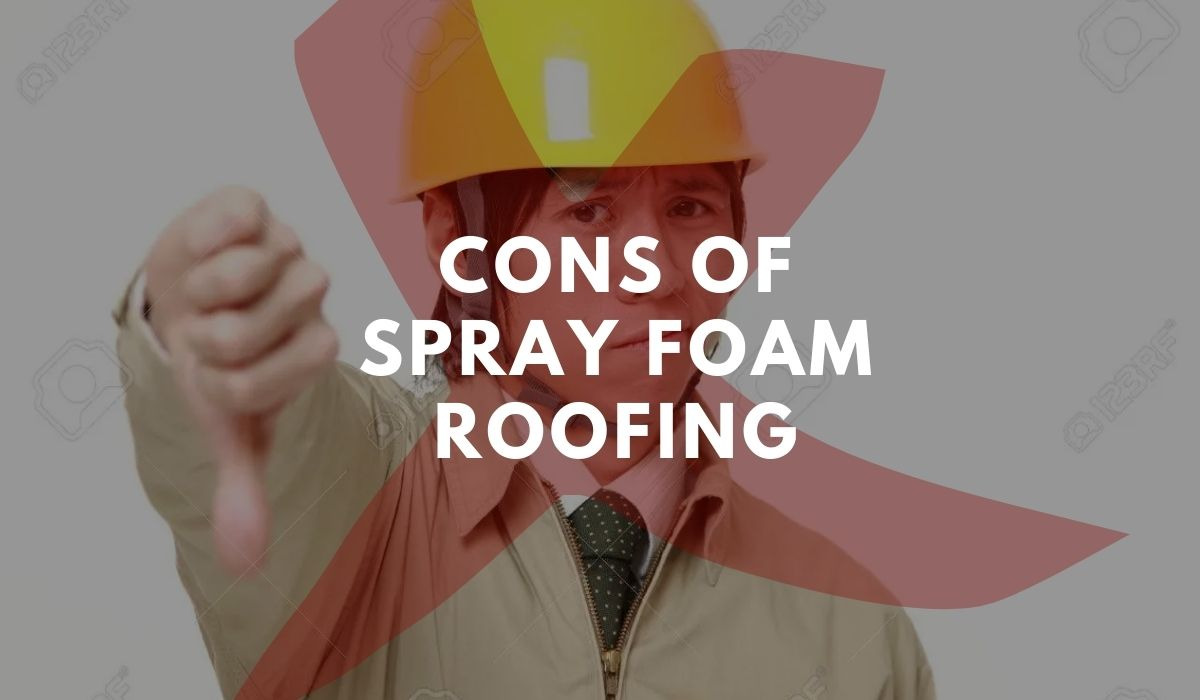
Being biased towards SPF roofing is not something we do. We want to make sure we are also presenting the potential drawbacks of spray polyurethane foam roofing to our customers.
Being fair will help you make a more well-informed decision about their roofing needs.
Upfront Cost of Spray Foam Roofing Systems
While it may save you money in the long run, SPF roofing does have a higher upfront cost compared to traditional roofing systems.
SPF Roofing systems can cost anywhere from $5.00-$8.00 per square foot, depending on the thickness and size of the roof.
This cost can be offset by energy savings and extended longevity, but it’s still important to consider for those with a tighter budget.
Spray foam roofing may not be the best option for those looking for a more cost-effective solution in the short term.
Application Window of Spray Foam Roofing is Limited
SPF roofing systems should be installed when the temperature is over 50°F and the relative humidity is low.
Precise conditions are required for proper installation, and the application window can be limited in colder climates or during the winter months.
This means that SPF roofing may not always be a viable option for those with strict time constraints or limited weather conditions.
If you live in an area with a shorter application window, it may be better to consider other roofing options.
Remember, to have a successful SPF roofing installation, it’s important to work with a trained and certified contractor.
They will ensure optimal conditions for application and proper installation to maximize the benefits of your SPF roofing system.
Weakness to UV Rays
The main cause of spray foam roof failures is UV exposure. While SPF roofing is durable and can withstand harsh weather conditions, it can deteriorate over time when constantly exposed to direct sunlight.
Regular maintenance and coatings can slow down this deterioration and extend the life of your spray foam roofing system, but it’s still something to consider when weighing your roofing options.
Spray polyurethane foam roofs may not be the best option for those in extremely sunny climates.
Potential For Over spraying
While spray polyurethane foam roofs are applied in a controlled environment, there is still a potential for over spraying.
This can result in damage to surrounding areas or property, including plants, cars, and other structures.
You need to remember that this adhesive foam expands and can be difficult to clean up. It’s important to work with a skilled and experienced contractor to minimize the risk of over spraying and potential damage.
SPF Roofing Systems Installation Process
Now that we’ve covered the potential pros and cons of SPF roofing, let’s take a look at the installation process.
Step 1: Preparation
As with any roofing job, preparation is key. Without proper preparation, the spray foam roofing system may not adhere properly or have a shorter lifespan.
First, the existing substrate is cleaned. Using a high-pressure hose, a contractor will remove dirt and dust. debris, and any loose materials that may interfere with adhesion.
In certain cases, a primer might be applied to create a smooth surface for the SPF to adhere to.
Next, edges and penetrations are sealed with tape and foam before the SPF is applied. This will ensure there are no gaps or weak spots in the roof that can lead to water damage or leaks.
Repairs may also be made to the existing substrate before moving on to the next step.
Step 2: Application of Polyurethane Foam Roofing
Once the roof is properly prepared, it’s time for application. The roof surface is then covered with spray polyurethane foam, which is applied with a minimum thickness of 1 inch but can be applied with greater thicknesses to provide more insulation.
The contractor will then shape and sculpt the foam into desired shapes, such as ridges or valleys, before applying a protective coating. Doing so helps with drainage and adds to the roof’s durability.
Step 3: Application of Elastomeric Silicone
To ensure your roof is protected against the harsh UVs of the sun, a top coat of elastomeric silicone is applied.
This not only provides additional waterproofing but also gives the roof a finished and polished look.
In order to guarantee a consistent thickness and even coverage, this coating application is carried out in several passes. The silicone also adds to the roof’s flexibility and overall longevity.
Step 4: Implementation of Roof Granules
The elastomeric top coat is then broadcast with roofing granules of #11 grade. This increases the system’s strength, robustness, and UV protection, and adds to the roof’s appearance. Roof granules also help to protect against hail damage.
This is applied by a specialized machine that ensures an even distribution and the granules are then embedded into the silicone coating.
Step 5: Curing of Spray Polyurethane Foam SPF
The final step in spray polyurethane foam roofing application is the curing process. This involves allowing the spray foam and protective coating to fully dry and set, typically for a period of 24-48 hours.
During this time, it’s important to avoid walking on or causing any damage to the newly applied roofing system.
After the curing process, a final inspection is conducted to ensure the roof meets all necessary standards and specifications.
How to Properly Maintain a Spray Polyurethane Foam Roofing
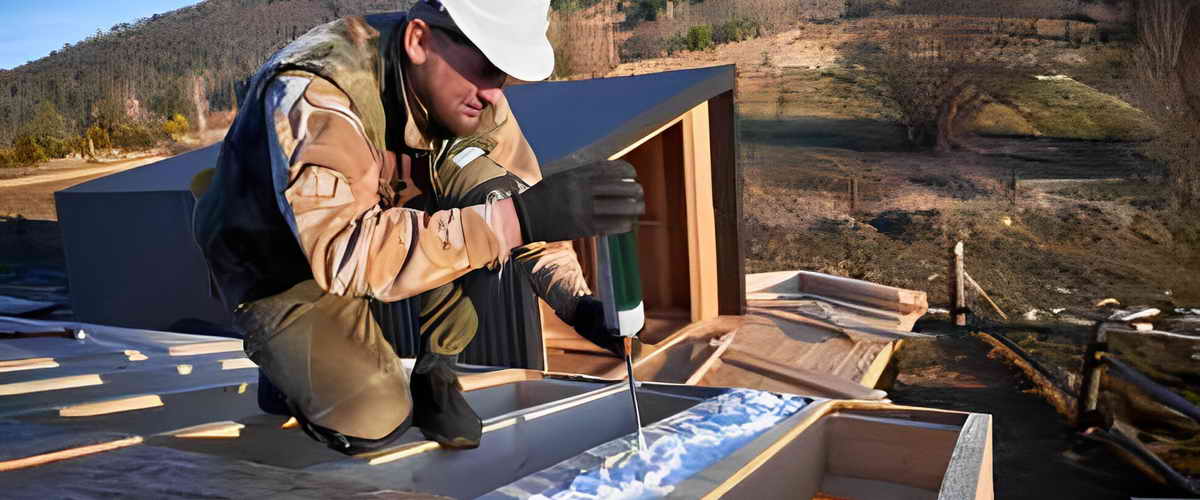
it’s no secret that the key to a long-lasting roof is proper maintenance. The more attention and care you give your SPF roof, the longer it will last.
With that said, here are the top tips for maintaining your SPF roof:
Tip #1: Be Sure to Trim Tree Branches
Every day, there’s a great chance that your roof is constantly bombarded by tree branches, leaves, and other debris. This can lead to clogged drains and gutters and ultimately result in water damage.
To avoid this, make sure to regularly trim any nearby tree branches that may be hanging over the roof. Doing so will also help prevent any potential damage from falling branches.
Tip #2: Schedule Regular Inspections and Cleanings
It’s important to have your SPF roof regularly inspected by a professional contractor to ensure there are no potential issues or damages.
Professionals can also clean the roof and clear out any debris that may have accumulated. We recommend scheduling inspections at least once every 6 months or as needed.
If there are underlying issues on your roof, you’ll be able to address them before they become bigger (and more expensive) problems.
Tip #3: Fix Any Leaks Immediately
If a leak is discovered, it’s important to act quickly and have it repaired immediately. Leaks can often be caused by cracks in the SPF or damage to the protective coating.
These should be fixed as soon as possible to avoid any further water damage and potentially costly repairs.
To fix leaks, you can use a patching compound specifically made for SPF roofs. It’s always best to have a professional contractor conduct the repair to ensure it’s done properly and effectively.
Tip #4: Avoid Placing Heavy Materials on Spray Foam Roofing
For commercial buildings, it’s not uncommon to have HVAC units, satellite dishes, and other equipment installed on the roof.
However, it’s important to take caution with the weight of these materials and ensure they’re properly distributed to avoid any damage to the SPF system or coating.
You can check with your SPF manufacturer for specific weight limits and recommendations.
Tip #5: Consider Re-Coating Your SPF Roof Every 5-10 Years
To ensure maximum protection and improve the longevity of your SPF roof, it’s recommended to have it re-coated with elastomeric coating every 5-10 years.
This will help protect against UV damage, weather elements, and more. Doing this won’t just prolong the life of your roof, but it can also improve energy efficiency and potentially lower cooling costs.
Maintenance of SPF roofing systems isn’t that hard. Following these tips will help ensure that your spray polyurethane foam roof has a long and successful lifespan.
This type of roofing system is not only durable and energy-efficient, but with proper care it can last for decades, saving you more money down the road.
How Long Will Spray Foam Roofing Last?
After all that work, you probably want to know how long your newly installed SPF roof will last. With proper maintenance and regular inspections, a spray foam roof can last anywhere from 30-50 years.
Unlike traditional roofing materials, SPF roofing won’t easily crack, curl, or break down over time.
Considering the cost-effectiveness and longevity of SPF roofing, it can be a great option for commercial or industrial buildings.
Plus, with its energy-efficient properties, it may even contribute to lower utility bills in the long run.
Foam Roofing Cost
Determining the cost of a spray foam roofing installation can be difficult as it will vary depending on the specific materials used, the size of the roof, and any additional features or repairs needed.
On average, Installing a spray foam roof typically costs between $6,200 and $7,200. For one inch of foam, this price works out to $5 to $3 per square foot or $250 to $300 per square.
This estimate includes the cost of labor and materials. However, repairs and additions may add to the overall cost.
While it may seem like a larger upfront investment, a spray foam roof can save money in the long run with its durability and energy efficiency.
Plus, it often eliminates the need for additional insulation, making it an all-in-one solution for your roofing needs.
Can You Do DIY Spray Polyurethane Foam?
One concern many homeowners and building owners have are whether or not they can perform DIY SPF installation. We all want to save money and often feel capable of tackling home improvement projects on our own.
However, installing a spray foam roof is not something that should be attempted without professional training and experience.
The application process requires special equipment and materials, as well as an understanding of proper safety precautions.
Without this knowledge and expertise, it’s easy to make mistakes that could potentially lead to even more problems.
You might end up using the wrong materials or equipment, not properly sealing the roof, or even causing harm to yourself and others.
Plus, application tools for SPF materials are very pricey. A spray foam rig, which includes a generator, air compressor, and enclosed trailer, can cost as much as $100,000, while the majority of roof coating spray rigs will cost you between $10,000 and $20,000.
If you consider the cost of equipment and the potential risks, hiring a professional is always the best option for SPF roof installation.
This will ensure that your roof is properly installed and functioning at its best for years to come.
Choosing a Professional for Spray Foam Roofing Installation
Nothing beats the peace of mind that comes with knowing your roof is in good hands. When choosing a professional for SPF installation, there are several things to consider.
Extensive Experience and Training
First, the contractor should have extensive experience and training with spray foam roofing systems. They should also be licensed and insured, as well as willing to provide references from past clients. You’ll want to work with someone who has a track record of successful SPF installations and satisfied customers. This will ensure that they have the necessary skills and knowledge to properly install your roof.
Quality Materials
In addition, the contractor should use high-quality materials for the job.
They should be able to provide information on the specific products they will be using and answer any questions you may have about their durability and performance. Quality is essential for a long-lasting, energy-efficient roof. The contractor you pick should prioritize using the best materials for your specific needs and budget.
Competitive Pricing
It’s also important to choose a contractor with competitive pricing, as SPF installation can be costly.
Make sure they provide an itemized estimate that includes all labor and material costs, so there are no surprise fees later on.
Case Studies to Present
When choosing a contractor, it’s a plus to select a company that can provide case studies of successful projects.
This shows their experience and expertise in the field, as well as gives the opportunity for potential cost savings by using the same materials and techniques that have proven successful in the past.
Customer Service
Finally, the contractor should prioritize excellent customer service.
This includes being available to answer any questions or address concerns throughout the installation process and offer warranties for their work.
Working with a contractor who values communication and transparency will result in a positive experience and a successful SPF roofing systems installation.
Talk to Our Experts Today!
If you need a professional for SPF roof installation, then look no further. Our team of experts can provide a high-quality installation that will last for years to come.
Each of our experts has undergone rigorous training and has years of experience in the roofing industry.
Don’t hesitate to contact us for a free consultation and quote. Rest assured, working with us won’t break the bank as we offer competitive pricing. Contact us today to learn more!
Summary
And there you have it, an ultimate guide on spray polyurethane foam roofing! This article has covered everything from the benefits and potential drawbacks to choosing a professional for installation.
Our roofs are what protect us and our belongings from the harsh elements, so it’s crucial to make sure they are in tip-top shape.
By investing in an SPF roof, you can enjoy a durable, energy-efficient option for years to come.
If you have any additional questions about SPF roofs or are interested in getting one installed, don’t hesitate to contact our team of experts.
We look forward to helping you improve the overall quality and safety of your home or office.


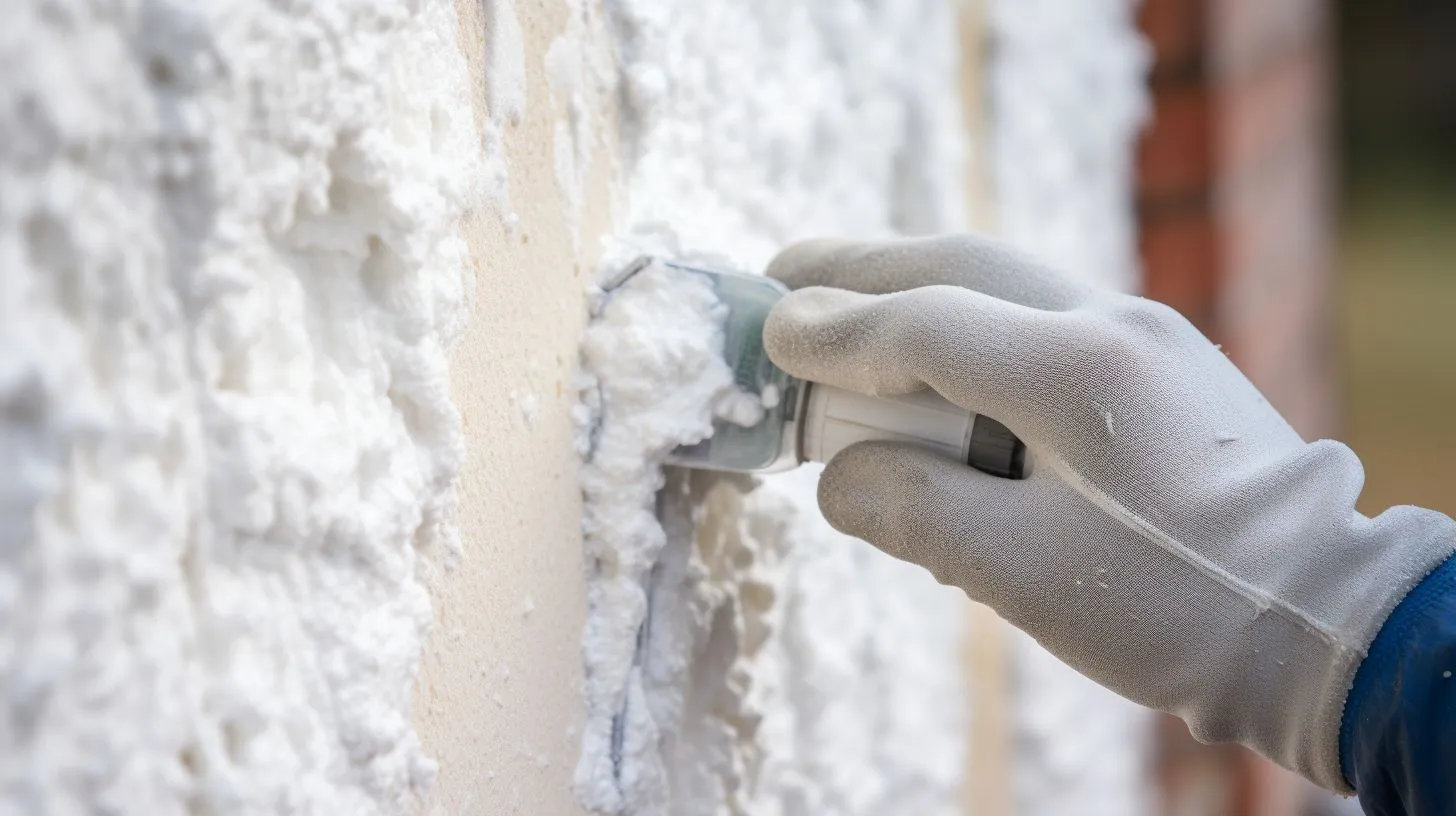
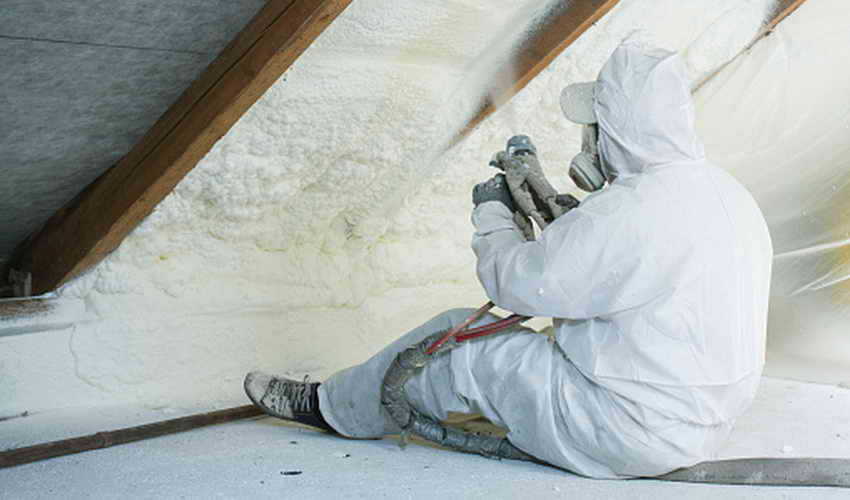
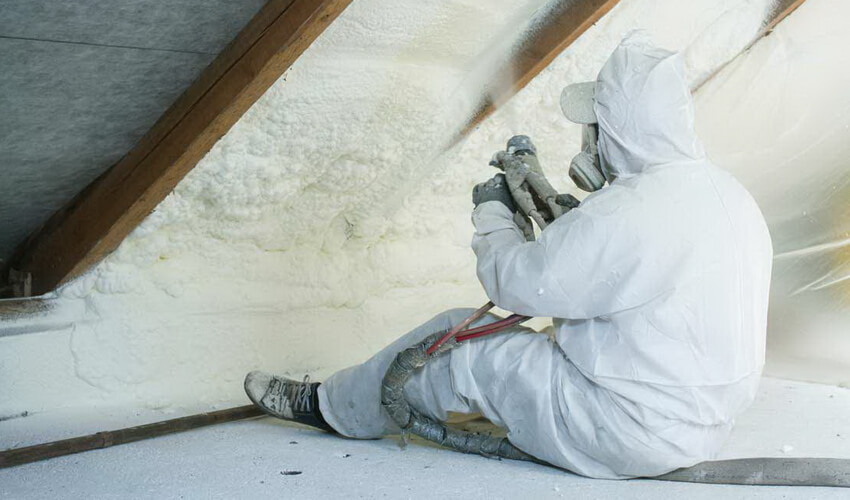
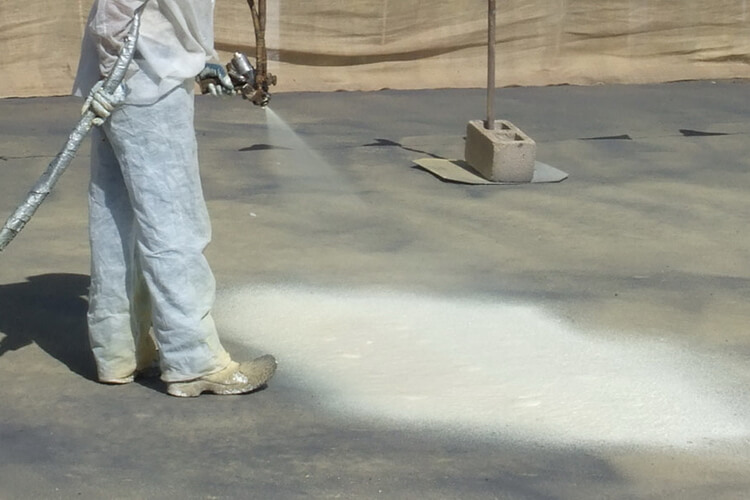
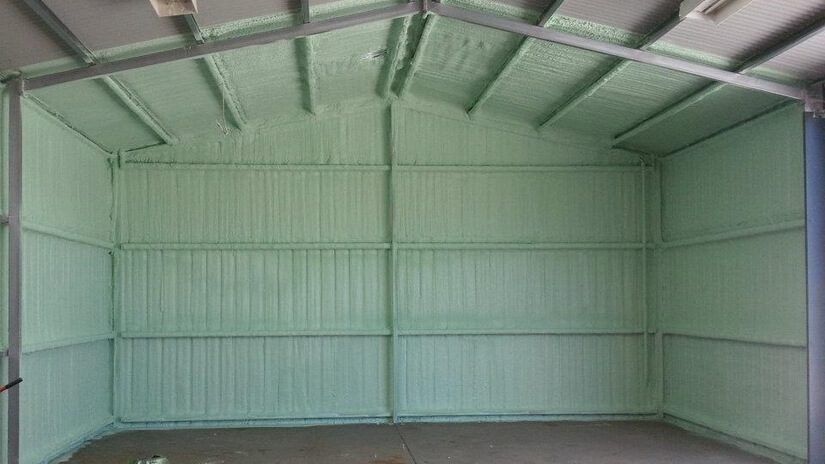
Leave A Comment